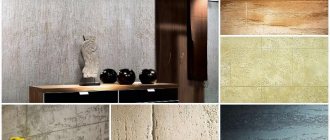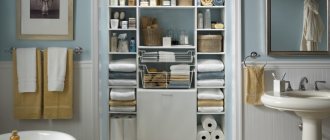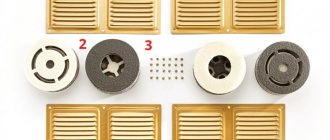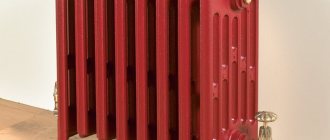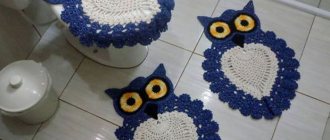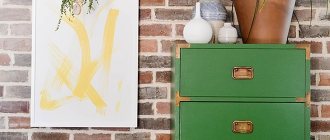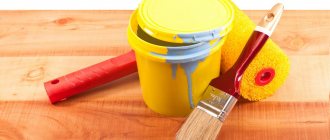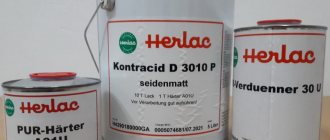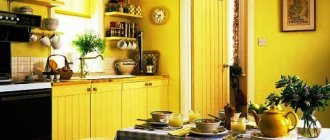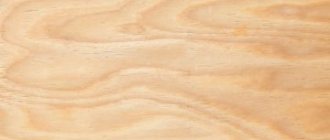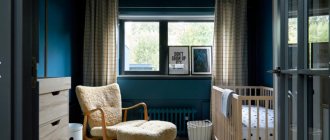Quite often, during renovations, property owners decide to paint the walls in the bathroom. Construction stores offer a wide selection of waterproof bathroom paints for walls in various colors, which will make the interior of this room cozy. Below you can familiarize yourself with the types of paints that need to be used to decorate the walls in the bathroom and the features of painting surfaces with your own hands.
Sherwin Williams is a popular paint among compatriots
Benefits of paint
Why choose this option and how inferior is it to tiles on the walls or stretched fabrics? Paint has many advantages.
- Small expense. Very often, no more than one can of the composition is required to treat surfaces.
- Simplicity. To coat with a coloring composition it is not necessary to have special skills. Just read the instructions and get to work.
- Large range of colors. In the store you can find a wide selection of paints of any color. With them you can bring any idea to life and choose any color.
In order not to make a mistake with your choice and not be disappointed with the result, purchase formulations only in specialized stores. Check out the products in catalogs and read reviews.
Pexels
Very often, buyers react to the bright packaging of foreign brands, while domestically produced products remain off the shelves. Although Russian materials are often not inferior in quality to their foreign counterparts, they sometimes cost significantly less. If you are purchasing multiple cans, check the lot numbers on the cans.
Color spectrum
The choice of colors is important for design, since color affects the perception of the interior, mood and mental state. It is important in advance, even at the stage of creating a design project, to decide what color is most appropriate to paint the walls in the bathroom. Since this room is most often used for a calm and relaxed pastime, it is better to choose a calm design in blue or green shades.
White is quite versatile and popular for decorating a bathroom, but don’t overdo it. In its pure form, snow-white creates the effect of a cold space, associated with not the most pleasant things, for example, a hospital. To avoid this effect in interior design, you should use a warmer shade of white - milky. And for variety, you can add accessories in bright colors; fortunately, white goes with any shade, so it’s impossible to make a mistake in choosing.
Black, burgundy or even red interior design can look original; it is important to choose the proportions correctly and dilute too aggressive colors with more neutral ones. Also, different colors can be used to zone a room or highlight individual elements. To highlight the shower area, a technique is often used with an accent wall in a contrasting color or with an ornament on a calm, plain background. You can see what colors to paint the walls in the bathroom in the interior photo and get design ideas from there.
Types of coatings
When choosing what and how to paint the bathroom, pay special attention to the base of the finishing material. The bathroom always has high humidity and a large amount of condensation, so it is necessary that the surfaces retain a neat appearance for a long time and are easy to clean. There are several types of solutions on the market today.
By base type
Water-based
Such solutions do not have any strong odors, are safe to use, and are easy to apply, but they have one significant drawback - they do not withstand moisture and are easily washed off with water. Therefore, in the bathroom it would only be appropriate on the ceiling. Dirt from such a coating must be carefully removed with a soft cloth or sponge.
Acrylic
This mixture has many positive qualities, such as an abundance of colors, water- and dirt-repellent properties, washability, and the presence of components that prevent the formation of mold. In addition, it forms a perfectly smooth surface without cracks or irregularities. This coating will not fade, will not crack and will last a very long time.
Silicate
It has good moisture resistance, but it is applied in a very thin layer that cannot cover all the unevenness. Therefore, it is necessary to carefully prepare the foundation for such a composition.
Silicone
They withstand temperature changes well and cover cracks up to two millimeters wide.
Of all the paints listed, this paint is best suited for the bathroom. However, we must take into account that it has a fairly high price.
By finishing coating
Among all the proposed options, three types of textures can be distinguished:
- glossy
- semi-gloss
- semi-matte
- matte
We advise you to choose the composition based on how smooth your walls are. To see all surface imperfections, turn off the lights in the room and shine a flashlight on it. You will see all the defects and choose the texture that suits you. Thus, a glossy sheen will highlight any unevenness, while the matte version, on the contrary, will hide finishing flaws.
However, the glossy effect has the ability to reflect light, which visually expands the room. Consider this when choosing material for a small bathroom.
Matte or glossy surface
In the photo with various ideas for bathroom design for painting you can find glossy or matte finishes. The choice largely depends on the style of the interior or the size of the room.
Gloss is well suited for modern interior styles; this coating is especially impressive in hi-tech or minimalism. Shiny surfaces are also appropriate in small spaces, making the space brighter and wider. And if you add mirrors and distribute the light correctly, the effect will only intensify. Gloss makes stains, stains, and dust easier to see; such a bathroom will require more careful maintenance.
Matte walls are often chosen for the design of spacious rooms. Such decor looks more relaxed, visually reducing the dimensions, making the interior more comfortable. Matte paint can hide minor defects that are clearly visible in gloss. This design is more appropriate for classics, Provence, eco-style, Mediterranean style, etc.
Preparation for finishing
Before renewing the surface coating, you need to prepare it well, since the final result depends on their condition. Also make sure you have all the necessary tools.
Required Tools
- Roller
- Brushes
- putty
- Putty knife
- Protective mask and goggles
Preparation
First, you need to remove all the furniture from the bathroom and remove existing decorative elements from the walls. This applies to all holders, towel hooks, curtains, rugs and other small items. Then the walls and ceiling must be freed of all old coatings. If you want to get rid of old tiles, then feel free to tear them off the walls. Next you will need to level the surface, making it perfectly flat using plaster.
Unsplash
If the walls have been painted, the coating can be removed with a scraper or sharp spatula. The resulting cracks must be filled with moisture-resistant putty. If there are wooden surfaces in the room, they must be sanded and dirt removed. This way the new layer will stick better.
Don't forget to remove mold and mildew if present. A chlorine solution or a special mixture, which can be bought at any hardware store, can effectively cope with this. We recommend carrying out this procedure a few days before painting so that the surfaces have time to dry. And to get rid of grease stains, it is better to use a detergent designed specifically for these stains.
After leveling and removing the old coating, all surfaces must be washed to get rid of dust and small chips.
Cover all plumbing fixtures with thick polyethylene. It is better to wrap the toilet and washbasin with shockproof material so as not to break these fragile products during repairs. We recommend removing switches and sockets. Cover those areas that you do not plan to treat with dyes with masking tape. Your premises is ready for use.
- Ceiling
How to paint a ceiling correctly: the whole process from preparing the base to finishing
Decorative painting methods
Creating drawings with your own hands is not accessible to many; a complex process can be replaced by using stencils, or using other decorative methods for obtaining an original design.
Creating drawings with your own hands is not accessible to many; a complex process can be replaced by using stencils.
Using stencils
A stencil is a convenient option to create beautiful patterns on the wall. They come on a self-adhesive base; if there is none, then a stencil is attached to the surface painted in the main tone using masking tape. The shade chosen for the drawing is rolled with a roller; it is important to paint the areas well in order to get a clear image.
It is important to paint the areas well to get a clear image.
Striped walls
Creating stripes on the surface helps to increase space and create an unusual design in the room. What width and color to choose depends on the wishes of the master; there are no restrictions in this regard. The boundaries of the strip are marked with masking tape to make straight lines.
Creating stripes on the surface helps to increase space and create an unusual design in the room.
Rollers for applications
This tool allows you to quickly apply a pattern to a surface. After the base layer has dried, work begins with an appliqué roller. It is necessary to move the tool evenly so that the pattern is applied evenly; the second strip of patterns should fit snugly against the first.
It is necessary to guide the tool evenly so that the pattern is applied evenly.
How to paint the walls in the bathroom with your own hands
After the preparation has been completed, we proceed to the most important stage. Let's give some tips on how to paint bathroom surfaces beautifully and neatly.
Unsplash
The paint is usually applied in several layers, depending on the degree of coverage. Before use, read the instructions, as some formulations must be diluted with special solutions. For application it is better to use a roller (as in the photo). This tool will ensure a thin and uniform distribution, which will greatly save product consumption.
Hard-to-reach places and corners are painted over first, and only then the base layer is applied. To do this, use a small brush.
Be sure to remove excess paint in a paint bath. Do not neglect this, otherwise there will be smudges.
Each subsequent layer is applied after the previous one has completely dried. To ensure that the composition dries evenly, provide it with the desired temperature, which is indicated on the package. Also try to avoid drafts.
Painting the bathroom
Once the bathroom painting design is determined, the painting technology becomes clearer. The lesson of a single-color coating is easier than applying different colors; the following steps are performed:
- The paint mixes well.
- If necessary, color is introduced.
- First, paint the joints in the corners and hard-to-reach areas using a narrow brush.
- Afterwards, the main areas are painted with a roller or wide brush.
- When the first layer dries well, apply the second. The number of layers is determined based on the obtained quality of wall painting.
When the first layer dries well, apply the second.
How to paint a bathroom ceiling
Pixabay
To process it, use a roller with medium-length pile. We recommend squeezing it well in the bath so that the solution does not turn into drops. If you are a beginner, use a roller with a short handle. It will not be pulled to the side, and you will feel the instrument better.
You need to overlap the paint to smooth out the transitions. Five centimeters will be enough.
The ceiling must be treated in several layers. In this case, after the first layer has dried, the second layer is applied in a perpendicular direction.
- Ceiling
How to properly paint a ceiling with water-based paint
Video:
Comments (3)
- Svetlana May 22, 2022 at 04:03 pm
What paint do you like?
Answer
- Natalya May 27, 2022 at 04:50 pm
I painted a bathtub a year ago with dulux paint and was very pleased. The paint is lump-free and dries quickly. Besides, it can also be washed, it’s totally cool.
Answer
- Evdokia December 12, 2022 at 7:56 am
thanks for the advice
